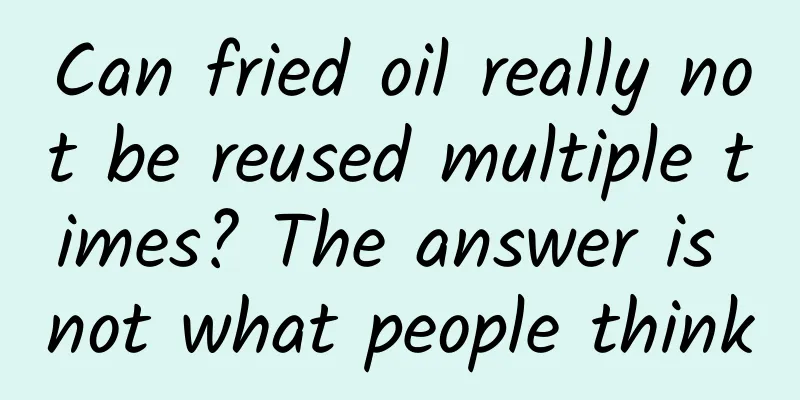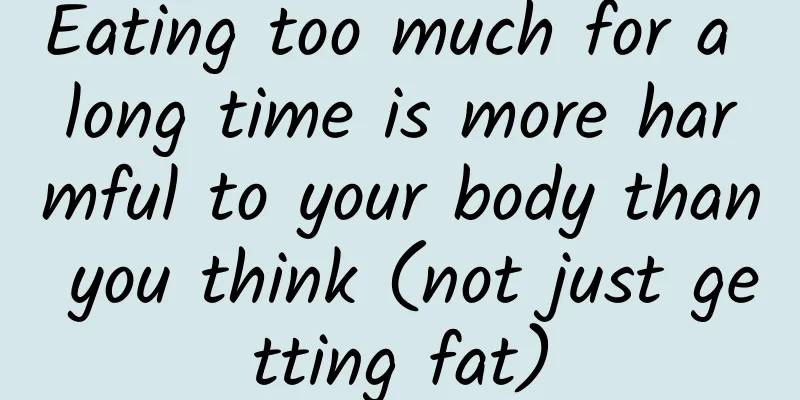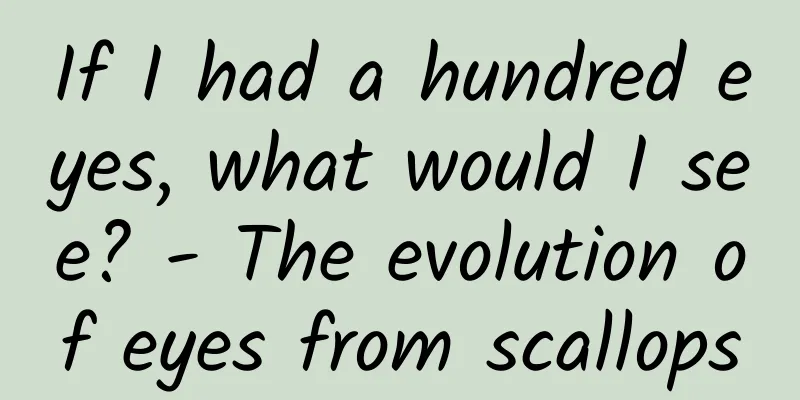Can you avoid gaining weight without dieting? Peking Union Medical College doctors teach you the secrets of diet

|
Author: Zheng Xixi, Internal Medicine Doctor at Peking Union Medical College Hospital The short holiday is here again. Although we can’t have dinner parties anymore, we can’t go out during the short holiday. We can’t avoid ordering takeout at home. Milk tea, potato chips, and cakes will quietly turn into fat around the waist. Weight always grows up quietly without us noticing, but dieting and losing weight requires great courage and willpower. It would be great if we could lose weight without noticing. Here are some methods that can help you lose weight more easily, especially during the short holiday when there are many delicious foods. If you can use the following points to lose weight, you can get twice the result with half the effort. 1 goblet + small plate Using visual illusions, the human stomach is very magical. Sometimes we can feel full after eating a sandwich, and sometimes after a big meal, when dessert is served, the stomach has magically made room. This shows that "fullness" is relative, and it is unreliable to rely on the feeling of "fullness" to control the amount of food eaten. Our stomach and brain will not be aware of hundreds of kilocalories of excess calories. For most of us, “done eating” means the bowl is empty, the cup is empty, or the dishes are served - we rely on external cues to tell us when to put down our chopsticks. An important point among these "external signals" that mean "you're full" is that the bowl is empty. Experiments show that people will eat 92% of the food on the plate. The size of the tableware often determines how much we eat. Using small bowls and plates to hold rice and vegetables will reduce our calorie intake unconsciously. Which of the two lines in the picture below is longer? (Pictures are from the Internet and are for learning purposes only) When we see a vertical line and a horizontal line, we perceive the vertical line as longer, but in fact the two lines are the same length, as can be seen in the figure below. Applying this visual illusion to life, people will think they are drinking more when they drink from a long and thin cup. Studies have shown that people drink 25-30% more from a short and fat cup than from a long and thin cup. If we use a long and thin cup to drink sugary drinks and beer commonly seen at parties, we can unknowingly drink 1/4 less calories. Similarly, visual illusions are also useful for controlling the calories you eat. You can compare which of the orange circles in the two pictures below is larger? It looks like the second one is bigger, but in fact, they are the same size. So the same amount of food will appear to be more when served on a small plate. When eating at a buffet or party, if we choose a small plate, we will unconsciously take less food. Someone did an experiment at a buffet for nutritionists. The nutritionists attending the party were randomly assigned large plates and small plates. It turned out that the nutritionists who used the large plates took 31% more food than those who used the small plates. Using optical illusions to lose weight: Visually, small plates and tall cups make the food appear larger, making us think we are eating and drinking a lot, thereby reducing the total amount of food and drink. 2. The temptation of rich variety Why does the low-carb diet work? Low carbohydrates can help you lose weight. Extreme low carbohydrate diets, such as the Atkins diet and the ketogenic diet, have been proven effective by many people. Moreover, in trials of very low carbohydrate diets, there is almost no need to set an upper limit on calorie intake. Instead, you only need to limit the types of food you eat. "Except for carbohydrates, you can eat whatever you want." Anyone who has tried low-carb diets should know that when eating a low-carb diet, there is basically no choice of food except butter, vegetables and meat. When the types of food are greatly restricted, the calorie intake will unconsciously decrease. Increasing the types of food will make everyone eat more, which is why a buffet is very high in calories. We eat more when there is a variety of food! What's even scarier is that even if there is just a "look" of variety, we can eat more. For example, if a bag of chocolate beans is dyed in various colors, even if the flavors are the same, we will eat more. Possible coping methods: Don’t let variety lead you to eat more If you are cooking for yourself, you can reduce the number of dishes. Instead of three dishes and one soup, you can make "one-pot" dishes, which contain both vegetables and staple foods, so you can better control your intake. When buying snacks, don't buy many kinds at once, but only buy one kind at a time and try to buy small packages, don't buy multiple flavors of several packages. Artificially reducing the number of choices can help you eat less without realizing it. 3 Make eating troublesome - a good way to deal with snacks We only eat food that we can see, and the more easily available a food is, the more we tend to eat. Food served in glass, transparent bowls makes it easier for people to eat more [3], because we can see the food in the bowl and subconsciously want to finish it off. This is why many desserts are served in small transparent cups. If the same desserts are placed in opaque lunch boxes, they will be much less tempting to us. The display tables in dessert shops and transparent cookie jars are all tempting us. So we should try to reduce the amount of food that can be seen, and avoid using transparent jars to store cookies and snacks at home. People are very lazy. If we have to walk to another room to eat snacks, we may not eat them, rather than putting them at hand.[4] In addition, when we stand up from the sofa and walk to another room, we have time to think about whether we really want to eat snacks and whether we need to lose weight. This time can make us decide whether to eat or not. However, if the snacks are right at hand, we may eat them before we have time to make a decision. The best way to deal with snacking – make it harder Keep snacks in the corner of the cupboard Wrap it with several layers of wrapping paper Set a rule that you can only eat in restaurants, or that you must eat snacks on a plate. This way, when you suddenly want to eat, you need to find something to eat, and then you need to wash the plate after eating, so you may not eat snacks. 4. The pitfalls of dinner parties: the more people, the more they eat Sometimes, we "eat" not because we are hungry, but because everyone is eating, or because we are happy and want to celebrate so our appetite is whetted. When people stop eating at a dinner party, it is often because their companions have finished eating, not because we are full. Everyone has this experience. When eating dumplings at a family dinner, you will definitely not remember whether you ate 10 or 15 dumplings. This is the trap of dinner parties. Psychologists have done research and found that compared to eating alone, people eat 35% more when eating with good friends on average, and they eat nearly twice as much when eating with a large group of people. People of the same kind eat similar amounts of food when they eat together, which is why a family or a couple often have similar body shapes. Of course, holidays are all about having fun, so Xixi won't let everyone eat salad at home during the holidays, but will use the psychology of people eating together to influence each other to lose weight. Just like there is a "rabbit" (Pacer) to control the speed of marathon running, there is also a "rabbit" on the dining table to control the rhythm of eating. We must be next to the "rabbit" who eats slowly and eats less, so that we can reduce the amount of food we eat unconsciously. Tips for controlling your food intake during holiday gatherings: (of course, don’t dine with strangers) Try to be the last person to arrive at the table so that you can help set the table, put the tableware, etc. Sit next to someone who eats slower or less, or eat as fast as the slowest eater. Don't eat all the food in your bowl, as it will make you look like you haven't finished eating. This will politely decline the offer of another bowl of rice. Try to sit next to vegetarian or low-calorie dishes, and avoid sitting next to fried foods, staple foods or snacks, so that you don't always eat high-calorie dishes. Source: Peking Union Medical College Journal |
>>: What happens when your brain splits open?
Recommend
Cultivate the blue land! Use the "materials" of a great country to support the "deep blue dream" of the ocean
Produced by: Science Popularization China Author:...
Introduction to Yang Wanli: Has the ranking of optimized websites recovered?
The website optimization ranking in the second ha...
Mobile game industry information flow optimization methodology: well-founded material analysis
According to Tencent's Q2 financial report, l...
80% of affected users may abandon iPhone: Are US companies the biggest victims of the "WeChat ban"?
Trump's blockade policy against Chinese techn...
The Gate of True Love "Matrix Awakening" video tutorial
The Gate of True Love "Matrix Awakening"...
WeChat Reading: 5 APP fission growth methods based on paid membership
WeChat Reading has made good use of its product t...
User targeting method for Toutiao advertising!
Those of us who do marketing promotion know that ...
With these tools, you can easily create high-conversion landing pages even if you don’t know design or code!
The landing page is an important part of relation...
In addition to red envelopes, the Spring Festival Gala also has black technology
What? You’ve finished watching the Spring Festiva...
How to promote an H5 event with 10W+PV?
——How to operate an event with little money and l...
Marketing promotion: 5 steps to implement gamification marketing!
In the era of information explosion, if you want ...
Guo Yaotian teaches you step by step how to block WeChat public accounts from dominating the screen, Part 3
When you read this title, you must want to know h...
Guangdiantong optimization tips and precautions
Guangdiantong is a DSP advertisement based on Ten...
Don't lose weight randomly! These unreliable weight loss methods may damage your bones
The matter of losing weight The most difficult pa...
The secret to quickly improving website rankings? Principles + operations + Q&A, all here!
1. Principle The three core steps of SEO are: web...









